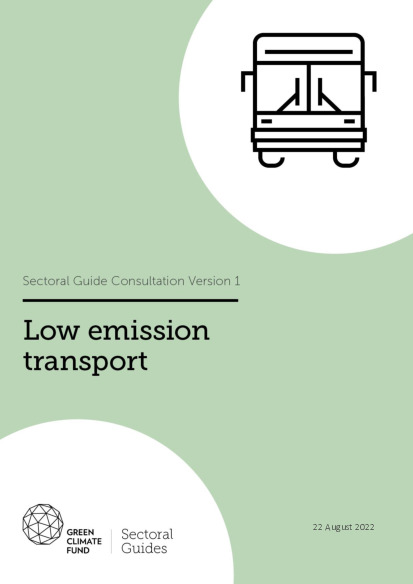Sectoral guide: Low emission transport
The Transport sector has a significant and measurable impact on climate change accounting for nearly a quarter of all energy-related CO2 emissions as indicated by the International Energy Agency. Among the different modes of transport, road vehicles – freight, cars, trucks, buses, and two- and three-wheelers – account for nearly threequarters of transport carbon dioxide emissions. In addition to greenhouse gas emissions, the transportation sector is one of the major contributors to emissions of black carbon, short lived climate pollutants. At the same time hundreds of millions of people in developing countries lack convenient access to efficient and low emissions public transport.
The greatest and most common barriers are lack of sufficient funding and financing in the face of higher upfront costs as well as more significant technology risk (e.g., battery or fuel cell technical lifespan) and longer total cost of ownership lifespans, as well as lack of political support and continuity over time, and lack of governmental capacity. If current investments do not shift from low occupancy, fossil fuel-based systems to high occupancy, renewable powered systems, it will lock in a fossil-fuel, high emission future. Radical paradigm shift or transformation is needed for the transport sector.
Research-based evidence, best practices, and lessons learned indicate that the highest impact for a paradigm shift in the low emissions transport sectoral guide can be achieved through three interlinked pathways: (1) accelerating shift to low emission public transport, (2) rapidly electrifying transport systems, and (3) supporting scale up of new generation zero emission fuels. To meet the capital needs of the three pathways, alignment between long term strategic transport planning as well as land, energy, and financial planning, which integrate climate and development goals, is essential. Public financing can lay the critical foundation for low emissions transport but will need to leverage and crowd in private investment at scale to meet the timeline and scale of transformation for the goals in the Paris Agreement. Therefore, GCF interventions that enable blended finance for developing countries is of paramount importance.
The sectoral guide draft was released for consultation between November 2021 and March 2022. The Secretariat received more than 151 suggestions and recommendations which are addressed in the current version of the guide. The sectoral guide will be submitted to the GCF Board for its consideration in 2022. In the meantime, GCF remains open to further feedback on this draft. For further inquiries please contact us via: [email protected].
